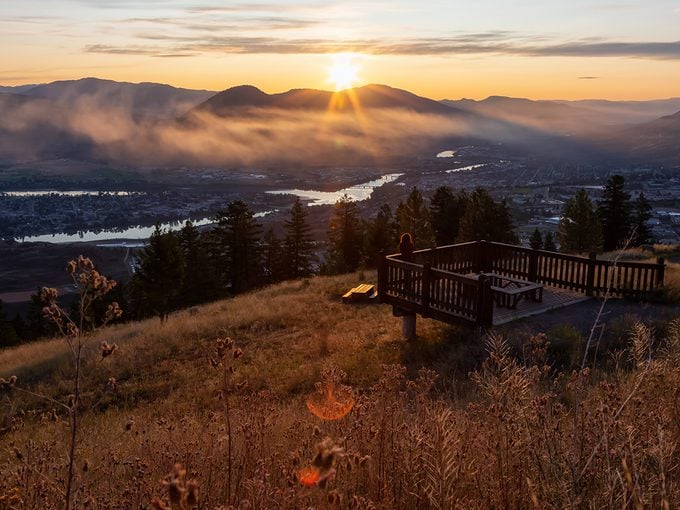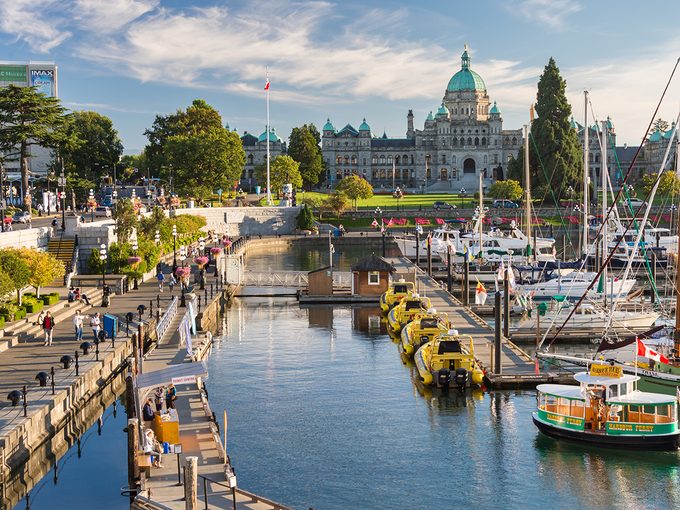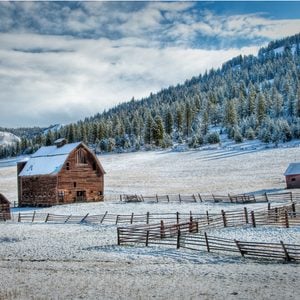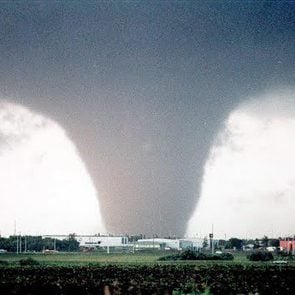This is the Warmest Place in Canada
Two Canadian cities can lay claim to this title—one has scorching summer highs hotter than Buenos Aires, while another destination has the mildest temperatures year-round.
Despite our international reputation as the Great White North, Canada can get pretty darned hot. Our country’s vast geography and diverse weather systems create some unique and unexpected local climates—some with summer heat that beats destinations much further south. Meanwhile, other communities have winters so balmy they barely get snow.

The Hottest Place in Canada
Canada doesn’t necessarily get warmer the further south you go—the hottest city (by average summertime high temperatures) actually lies above the 50th parallel. Kamloops, British Columbia, sits in the Thompson Valley about four hours’ drive northeast of Vancouver, and its desert-like landscape sees more days over 30 degrees Celsius than any other Canadian city. July daytime temperatures average a high of 29 degrees, with humidity dropping to a fairly parched 20 percent, and 303 mean monthly sunshine hours (about the same as Honolulu, Hawaii).
Known for its mountain biking trails and hoodoos—otherworldly rock formations caused by millions of years of erosion—Kamloops has its western neighbours, the Rocky Mountains, to thank for its hot, semi-arid climate. The city’s rain shadow location means that it gets significantly less precipitation than the soggy Pacific coast. In a phenomenon called orographic lift, prevailing winds from the sea get pushed upwards by mountain ranges, where moisture condenses into rain clouds (the same effect responsible for Canada’s wettest place, Hucuktlis Lake). By the time winds pass the peak, most if not all of the humidity is lost, and temperatures on the downslope can be up to 14 degrees warmer. That’s why Kamloops—with its sagebrush, rattlesnakes and occasional tumbleweeds—looks and feels similar to parts of Nevada, Utah and Idaho.
The B.C. interior’s unique climate conditions can also make summer heat waves deadly—for instance in 2021, when a “heat dome” caused by high atmospheric pressure created sweltering conditions across the western half of North America. Canada’s highest-ever temperature—an unbelievable 49.6 degrees Celsius—was in June 2021 in Lytton, B.C., a tiny hamlet two hours west of Kamloops. Soon after, a devastating wildfire swept through the town, and most of the 250 residents had just minutes to grab what they could and evacuate.
Kamloops itself registered a no-less-scorching record high of 47.3 degrees during the heat wave, which killed 600 people across B.C. Global warming means that record may be beaten again sooner than we’d like—by 2051, the number of hot days over 30 degrees could more than double in Kamloops, from an average of 27 days a year to 67, according to the Canadian Centre for Climate Services.
Read the terrifying tale of the worst forest fire in Canadian history.

The Warmest Place in Canada Year-Round
Kamloops may make you melt in summer, but that doesn’t mean its winters are warm. In fact, its average lowest annual temperature is -27 degrees, while the record coldest was set in 1950 at a frigid -38.3 degrees Celsius. For a more temperate getaway, you’ll want to head to Victoria, B.C., Canada’s mildest climate—a sub-Mediterranean zone at the southern tip of Vancouver Island where the mercury rarely falls below zero. In fact, lemon and olive trees grow outdoors just north of the city.
Victoria lies further north than snowier cities like Ottawa, Quebec City, and Minneapolis, but its average winter lows are kept in the single digits by warm ocean currents from the Pacific combined with near-constant offshore winds, which provide a buffer against temperature extremes. Snow and ice are so rare that even in January, you’ll spot residents fishing, sailing and golfing—far more fun than shovelling your driveway.
The only downside to Victoria’s winter is the rain—nearly two-thirds of the city’s 23 inches of annual precipitation falls from November to March. That’s nothing compared to the rest of Vancouver Island, however, which typically sees three times that amount (or more). Summers in Victoria are cool and relatively dry, thanks to the coastal mountains to the west, and daily high temperatures average in the low 20s in July and August. At night, it’s chilly enough for a jacket, with lows around 12 degrees.
Now that you know the warmest place in Canada, read up on the worst natural disasters in Canadian history.






